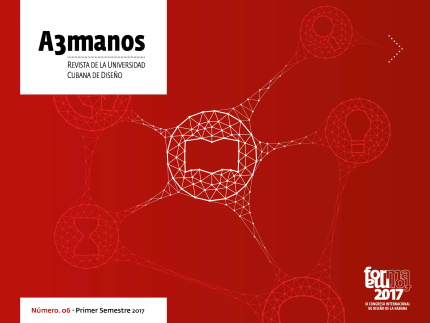Method for the development of products oriented to the generation of design concepts.
##plugins.themes.bootstrap3.article.main##
Abstract
Around us are different utensils, tools, machines, buildings and other objects, which meet our needs. These elements, which have no origin in nature, were designed by someone; However, although there is great activity in design, the processes that designers follow have been little studied. Based on cognitive psychology and a solid mathematical basis for the quantitative interpretation of the activities carried out during the design, this research aims to arrive at the definition of a method that allows to objectively evaluate tools used for the selection of processes in the generation of products, considering systems centered on the user. The result, which will define a way to determine the relevant parameters to measure the effectiveness in the generation of solution ideas, will be experimentally validated by comparing new product design methodologies, and will help industrial designers in the generation phase of new concepts. This, through a tool that facilitates the interpretation and localization of product attributes in the conceptual design phase, integrating functional requirements and user requirements.
##plugins.themes.bootstrap3.article.details##

This work is licensed under a Creative Commons Attribution-NonCommercial-ShareAlike 4.0 International License.
- Attribution — You must give appropriate credit , provide a link to the license, and indicate if changes were made . You may do so in any reasonable manner, but not in any way that suggests the licensor endorses you or your use.
- NonCommercial — You may not use the material for commercial purposes .
- No additional restrictions — You may not apply legal terms or technological measures that legally restrict others from doing anything the license permits.
- ShareAlike — If you remix, transform, or build upon the material, you must distribute your contribution under the same license as the original. NOTE: This point applies to numbers 1 to 20 of the magazine with the previous CC-BY-NC-SA 4.0 license. Does not apply to the new CC BY-NC 4.0 license from Volume 11, Number. 21 (2024).
References
Cross, N. (1999). Métodos de Diseño. Estrategias para el diseño de productos. México. Limusa Noriega Editores.
Hubka y Eder. (1993). Engineering Design, Heurista, Zurich.
Roozenburg y Eekels, (1995). Product Design Fundamentals and Methods,Wiley.
Cross, N., Christiaans y Dorst ed. (1996). Analysing design activity, Chichester, England. John Wiley y Sons Ltd.
Shah, J.J and Vargas, H. (2003). Metrics for measuring ideation effectiveness. Design Studies 24.
Cross, N., Dorst, C. y Rozzenburg, N. ed. (1992). Research in design thinking. Delft University Press.
Dorst, K. y Dijkhuis, J. (1995). Comparing paradigms for describing design activity. Design Stuidies,16.
Santesmases M. DYANE. (2001). Diseño y análisis de encuestas en investigación social y de mercados. Versión 2, México, Pirámide.
Kess Dort, Nigel Cross. (2001). Creativity in the design process: coevolution of problem-solution. Design Studies Volume 22, Issue 5
K.A. Ericsson, H.A. Simon. (1993). Protocol analysis: verbal reports as data, MIT Press, Cambridge, MA.
Ulrich, K., Pearson, S. (1998). Assessing the Importance of Design Throught Product Archaeology. Management Science, Vol. 44, No.3, March.
Ulrich, K., Eppinger, S. (2004). Diseño y desarrollo de productos, (3ª Ed.). New York: Mc Graw Hill.






















